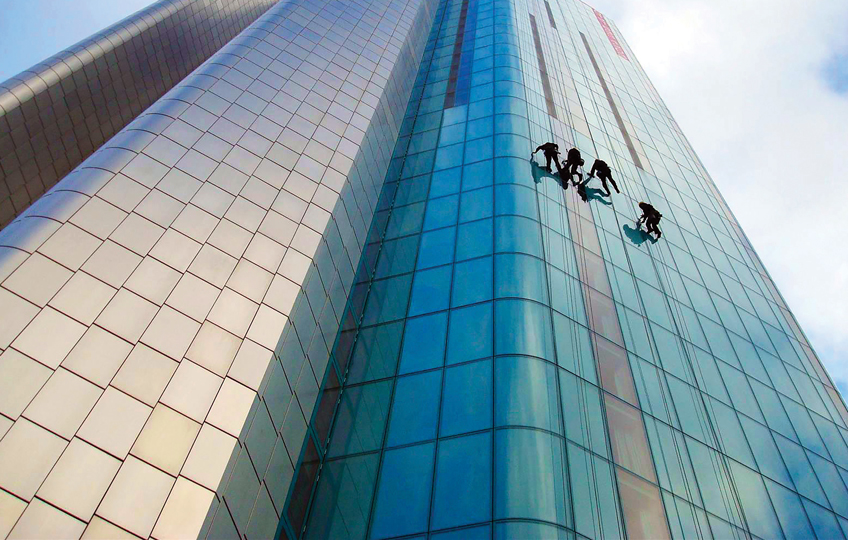
Photo by Total Access UK Ltd
Modern structural designs are becoming more extravagant and, of course, constructing to great height is increasingly common. All this is of little concern to an efficient rope access team who can move around the most complex of structures by means of their ropes alone and can either carry the necessary tools with them or use another rope system to deliver them to the required position.
There are occasions where one particular part of a major structure is impossible to reach by the method being used for the other parts. In such cases, the need to devise a major additional means of access can be prevented by the introduction of rope access.
Because of its non-mechanical operation, its ability to reach and operate within confined spaces, its minimal impact on the surrounding area and its ability to adapt to the limited availability of some work sites, IRATA rope access offers unique benefits to the Civil Engineer. Designs and structures of the past were seldom built with repair and maintenance in mind and are thus often inconveniently sited or designed for current works to be carried out.
Today, the application of Industrial rope access can be seen in most major cities, large towns or industrial complexes around the world. There are many reasons for the growth in the use of rope access in these locations but chief amongst them is the much heralded ‘small environmental footprint’ that the IRATA system of access delivers;
- No blocked streets
- No choking fumes from access machinery
- Reduced energy costs
- No ugly access structures closing walkways
- No noise
It is of little surprise that men and women on ropes, often operating on buildings without those inside even knowing they are present, are very popular with building managers, environmental services personnel and urban authorities.
Other reasons for the growth of rope access use is that other means of access have suffered some safety reversals; and that many new building designs have shapes or features that cannot be easily cleaned or inspected by traditional means. Furthermore, the growing trend of extremely tall building design means that most static access methods are impractical or unusable.
